SAS Urban Survival Handbook (37 page)
Read SAS Urban Survival Handbook Online
Authors: John Wiseman
Tags: #Health & Fitness, #Reference, #Survival, #Fiction, #Safety, #Self-Help, #Personal & Practical Guides, #General, #Survival Skills

An improvized mask of several layers of thin cotton fabric, anchored in place with elastic around the head, is more efficient than a smog mask or many simple disposable masks—providing it is ‘moulded’ well around the nose and mouth. If you have a thick beard, this may be your only choice, unless you go for something very elaborate.
Most face masks are called ‘nuisance masks’ and will cope with non-toxic larger-particle hazards like glass-fibre, loft insulation and (less so) sanding dust. They need replacing frequently. If they have replaceable filters, it may be possible to insert more than one.
REMEMBER
Filter masks all ‘leak’ to some degree or another. Change filters regularly and limit exposure as much as possible. DON’T consider masks an alternative to dust/debris collection at source and proper ventilation.
Fumes or poisonous dust (even suspected poisons) require a tougher mask altogether. It may even be necessary to go for a gas-mask type, which covers the whole face. There are even versions with their own air supply.
Head protection
Look for proper helmets and accept only those guaranteed against impact and penetration. The helmet MUST fit and be comfortable enough so that you don’t avoid wearing it.
It must also stay on. A chin strap is a good idea (if comfortable) to prevent the helmet falling off. Try a helmet before you buy it. Lean forward and see if it stays on.
There should be some air circulation, to avoid excessive sweating—sweat might run into your eyes. If you need to wear hearing protectors, check that this is still possible.
The cranium protectors worn by cyclists and climbers allow free movement and afford quite a lot of protection. These may be suitable where slips and falls are the main hazard—but many have open sections which won’t protect the head from falling objects or flying debris.
Sun protection
Never underestimate the power of the sun when working outside. Even a ten-minute job can turn into a couple of hours, and before you know it you could be burnt to a frazzle—with the added risks of sun/heatstroke and skin cancer. Cover exposed skin with high-protection sun screen, particularly vulnerable areas such as the back of the neck, and wear a hat (especially if you’re a ‘bit thin’ on top!). In hotter, humid climates the recommended fluid intake for someone doing manual labour is four litres a day—be aware of the danger of dehydration. Properlyfiltered sunglasses are a must—fashion ‘shades’ do not offer adequate protection.
Poisons
Danger lies in assuming that all household ‘chemicals’ are safe. Many preparations, from DIY products to over-the-counter medicines, are far from safe if not used with great care. Even aspirin may have toxic effects.
CHEMICAL HAZARDS
ALCOHOL
TYPES OF HAZARD
Inhalation • Ingestion • Absorption • Fire/explosion • Caustic burns
SAFE STORAGE
ACUTE POISONING
CHRONIC POISONING
KITCHEN/LIVING AREAS
Washing-up liquid • Oven cleaners • Mothballs • Bleaches • Matches
• Glues • Butane • Furniture polish • Disinfectants
BATHROOM
Nail varnish • Deodorants • Perfumes • Hair colourants • Talcum powder
• Lavatory cleaners
THE MEDICINE CUPBOARD
Aspirin • Paracetamol • Cough medicines • Cold ‘cures’
• Vitamin/mineral supplements
PRESCRIBED MEDICINES
GARAGE/SHED
Glues • Tar/grease-spot removers • Turpentine • Petrol • Caustic soda • Paint strippers
• Methylated spirits • Rat/mouse poison • Ant killer • De-icer • Cement • Lime
PESTICIDES
CHEMICAL HAZARDS
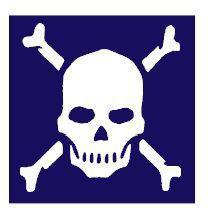 No one can avoid coming into contact with potentially-dangerous chemicals in the home. Most people have enough sense to treat all chemical preparations with proper respect – but there are many cases of poisoning which could not have been foreseen. Most dangerous or potentially-dangerous substances are labelled, but always remember: research into the harmful effects of all substances which are used in the home, in industry and the environment is constantly providing new information. Once, substances such as nicotine, asbestos, lead, aluminium, arsenic, opium and even mercury were thought to be harmless – or even beneficial to health!
No one can avoid coming into contact with potentially-dangerous chemicals in the home. Most people have enough sense to treat all chemical preparations with proper respect – but there are many cases of poisoning which could not have been foreseen. Most dangerous or potentially-dangerous substances are labelled, but always remember: research into the harmful effects of all substances which are used in the home, in industry and the environment is constantly providing new information. Once, substances such as nicotine, asbestos, lead, aluminium, arsenic, opium and even mercury were thought to be harmless – or even beneficial to health!
Know the dangers
You may think that you never use dangerous chemicals, but the chances are that you do—everyday—and will continue to do so as part of normal life.
It’s true that most household products have a fairly low toxicity (depending on the level of exposure and the sensitivity of the individual). In some cases, you would need to ingest large quantities to be at risk. But exposure over a long period of time may be as serious in the end result.
Quite apart from these dangers, always remember that you are under threat, it is now clear, from hazards in your water supply, and from pollution in the environment. Some areas carry particular dangers from lead, cadmium or aluminium. There are also the domestic dangers from asbestos, formaldehyde and carbon monoxide—even mains and cylinder gases. These may be aggravated by exposure to chemicals while at work (see WORK & PLAY).
PLEASE NOTE
Main references to some of the hazards may be found as follows:
Water supply
see SAFETY FIRST: Water and ESSENTIALS
Environmental pollution
see ESSENTIALS
Lead
see SAFETY FIRST:
Water
Aluminium
see SAFETY FIRST:
Water
Asbestos
see SAFETY FIRST:
Safe as houses?
Formaldehyde
see POISONS
Carbon monoxide
see SAFETY FIRST:
Gas
For references to drugs and substance abuse,
see
HEALTH
Look around your home
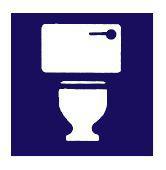 Look at a few of the most obvious products—not just polishes and detergents, but bleaches and toilet cleaners, air-fresheners and drain clearers, matches and firelighters, flysprays and disinfectants
Look at a few of the most obvious products—not just polishes and detergents, but bleaches and toilet cleaners, air-fresheners and drain clearers, matches and firelighters, flysprays and disinfectants
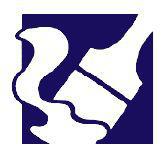 If you do DIY or enjoy gardening, you probably have paints, brush cleaners and paint strippers, thinners and solvents, pesticides and weed killers, rust removers, adhesives and sealants, creosote and bitumen
If you do DIY or enjoy gardening, you probably have paints, brush cleaners and paint strippers, thinners and solvents, pesticides and weed killers, rust removers, adhesives and sealants, creosote and bitumen
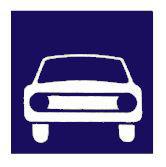 If you own a car you may be likely to have antifreeze and de-icer, petrol and oil, batteries containing acid
If you own a car you may be likely to have antifreeze and de-icer, petrol and oil, batteries containing acid
 Check the ‘over-the-counter’ medicinal preparations you keep for emergencies: aspirins and painkillers, skin creams and depilatories, cough medicines and ‘cold cures’, travel sickness remedies, vitamin and mineral supplements, cornplasters, products to regulate bowel movements
Check the ‘over-the-counter’ medicinal preparations you keep for emergencies: aspirins and painkillers, skin creams and depilatories, cough medicines and ‘cold cures’, travel sickness remedies, vitamin and mineral supplements, cornplasters, products to regulate bowel movements
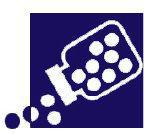 Possibly you have received or regularly require prescribed medication: for a heart condition, for migraine, for infections, for stress or sleeplessness, for birth control. If these medicines are old or unwanted, should they still be in your home?
Possibly you have received or regularly require prescribed medication: for a heart condition, for migraine, for infections, for stress or sleeplessness, for birth control. If these medicines are old or unwanted, should they still be in your home?
 Most people use some sort of ‘cosmetic’: deodorants, perfumes, aftershaves, talcum powders, soaps, bubble baths, hair sprays and gels, nail varnishes, shaving creams (and razors!), even cosmetic eye drops and ‘suntanning’ tablets to name a few.
Most people use some sort of ‘cosmetic’: deodorants, perfumes, aftershaves, talcum powders, soaps, bubble baths, hair sprays and gels, nail varnishes, shaving creams (and razors!), even cosmetic eye drops and ‘suntanning’ tablets to name a few.